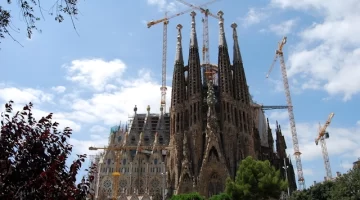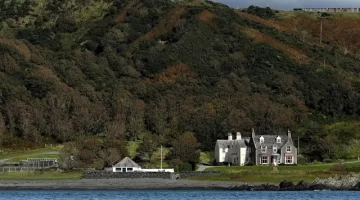Tashkent Metro Stations
Some Tashkent Metro stations are also tourist attractions, with mosaics and murals, as well as providing the Uzbekistan capital with efficient public transport.

The Tashkent Metro is not only a functional transportation system but also a showcase of the city’s rich cultural heritage and architectural beauty. Here are some key points about Tashkent Metro stations:
- Architectural Splendor: Many of the metro stations in Tashkent are known for their stunning architecture, characterized by grandiose designs, intricate mosaics, ornate chandeliers, and marble columns. Each station has its unique theme and design elements.
- Soviet Era Influence: The metro system in Tashkent was constructed during the Soviet era, and as such, many stations reflect Soviet architectural styles and ideological motifs. However, Uzbek cultural elements are also incorporated into the designs.
- Artwork and Decorations: The stations are adorned with impressive artworks, including murals, paintings, and sculptures, often depicting scenes from Uzbek history, folklore, and everyday life. The decorations contribute to the aesthetic appeal of the stations and provide passengers with a visual treat during their commute.
- Symbolism and Ideology: Some stations incorporate symbolic elements and ideological themes that reflect the values and aspirations of the Soviet era. For example, you may find motifs celebrating industry, agriculture, science, and solidarity among workers.
- Tourist Attractions: Due to their architectural significance and artistic beauty, several Tashkent Metro stations have become tourist attractions in their own right. Visitors often embark on guided tours to explore the underground art galleries and learn about the history and design of the stations.
Notable Tashkent Metro Stations
Kosmonavtlar Station
The Kosmonavtlar metro station is on the Chilonzor Line (Line 1) and is named after the Russian word for “cosmonauts.” It was opened on April 6, 1991, and is known for its unique and futuristic design. The station’s architecture reflects the theme of space exploration and pays tribute to the achievements of the Soviet Union in the field of cosmonautics.
The interior of the Kosmonavtlar metro station features a space-themed design, with walls adorned with mosaics, murals, and sculptures depicting various aspects of space travel. The station’s color scheme includes shades of blue and silver, further enhancing the cosmic atmosphere.
The Kosmonavtlar metro station is near several important landmarks and institutions, including the Uzbekistan Airways headquarters, the Institute of Nuclear Physics, and the National University of Uzbekistan. It serves as a convenient transportation hub for residents and visitors traveling to these destinations.
Alisher Navoi Station
Alisher Navoi metro station is also on the Chilonzor Line and is in the Yunusabad district, which is a residential and commercial area in the southern part of the city. The station is named after Alisher Navoi, a famous Uzbek poet, writer, and philosopher from the 15th century. He is considered one of the greatest figures in Uzbek literature and is known for his contributions to Persian and Chagatai literature.
The Alisher Navoi metro station is known for its unique architectural design. The station’s interior is adorned with beautiful mosaics, sculptures, and murals that depict scenes from Alisher Navoi’s works and Uzbek culture. The platform area is spacious and well-lit, providing a comfortable environment for commuters.
It’s conveniently located near several landmarks and institutions, including the Alisher Navoi Opera and Ballet Theater, the Navoi Park, and the National Library of Uzbekistan.
Amir Temur Hiyoboni Station
The Amir Temur Hiyoboni metro station is named after Amir Timur, also known as Tamerlane, who was a prominent Central Asian conqueror and the founder of the Timurid Empire. The station is on the Chilonzor Line (Line 1) of the Tashkent Metro system. It is situated in the Chilonzor district, which is a residential area in the eastern part of the city.
The station was opened on November 6, 1977, and it is one of the busiest metro stations in Tashkent due to its central location and proximity to various landmarks and institutions. The station’s design reflects the grandeur and historical significance of Amir Timur’s empire.
The architecture of the Amir Temur Hiyoboni metro station is characterized by its spaciousness and elegance. The station features marble walls, high ceilings, and intricate chandeliers, giving it a luxurious and regal feel. The platform is adorned with beautiful mosaics depicting scenes from the life of Amir Timur and the historical landmarks associated with his empire.
The station serves as an important transportation hub, connecting commuters to various parts of the city. It’s also conveniently located near several notable attractions, including the Amir Timur Museum, the Alisher Navoi Opera and Ballet Theater, and the Central Park of Culture and Recreation.
Overall, exploring Tashkent Metro stations offers a unique glimpse into the cultural, artistic, and historical legacy of Uzbekistan, as well as into the everyday life of the city.

















